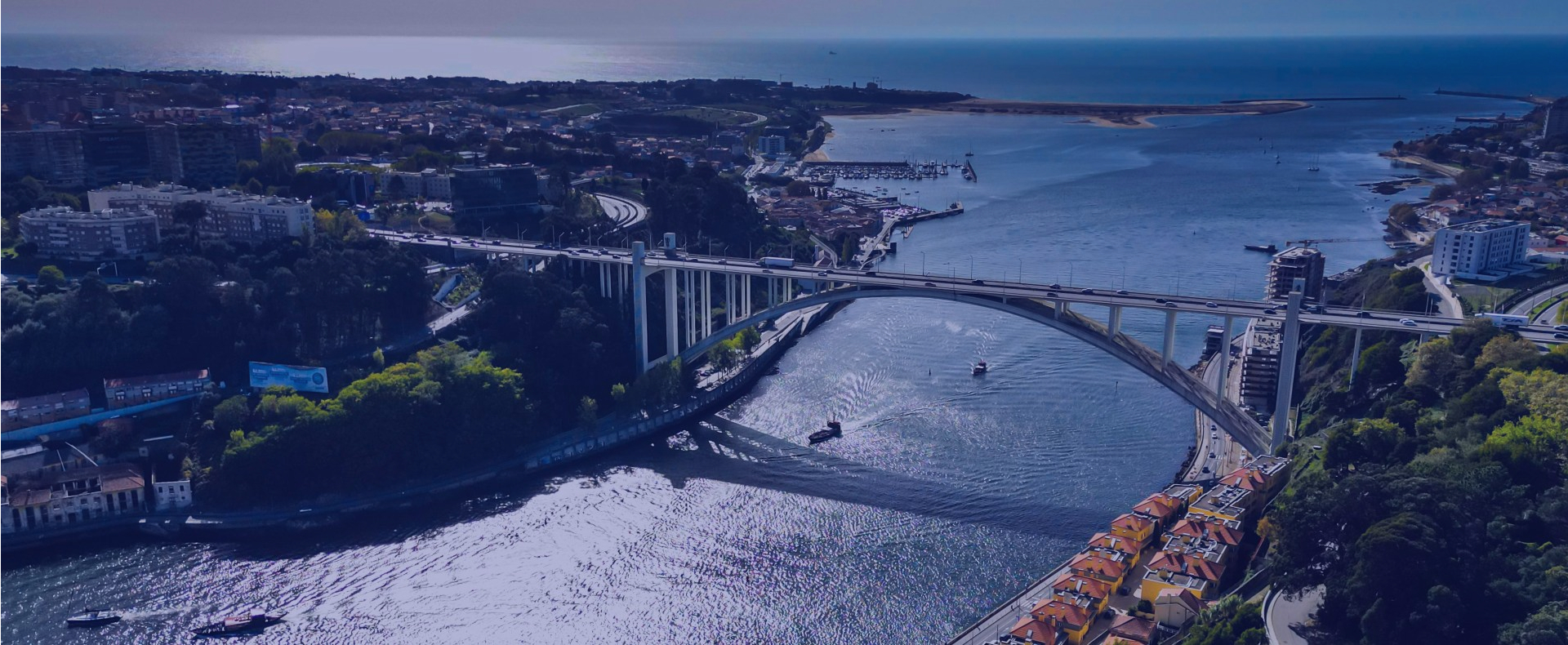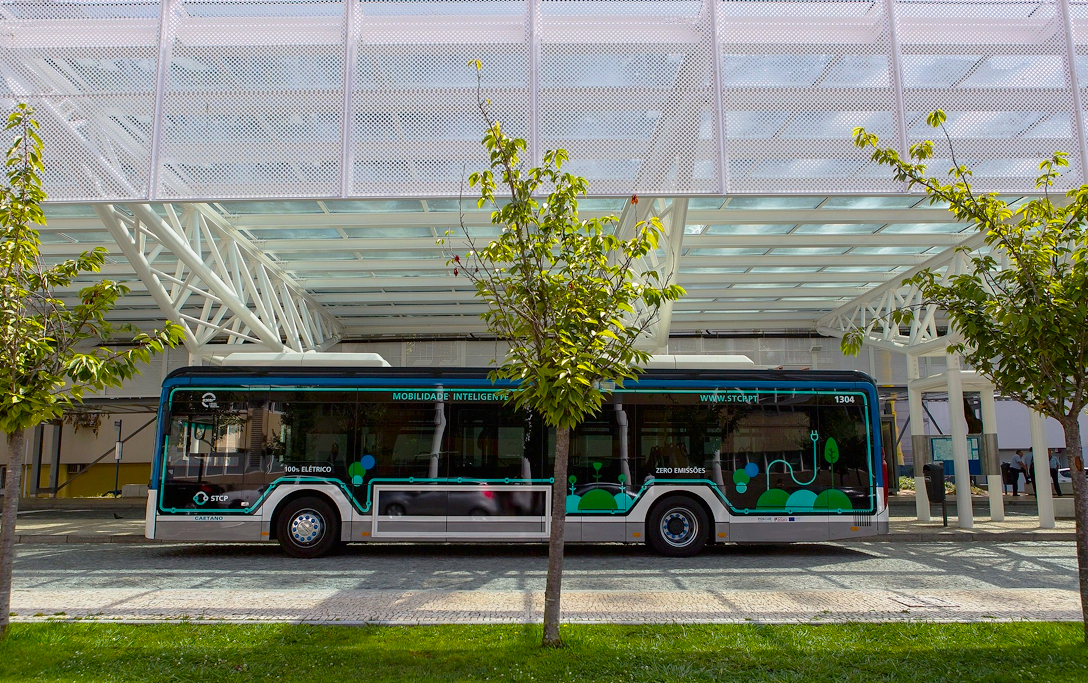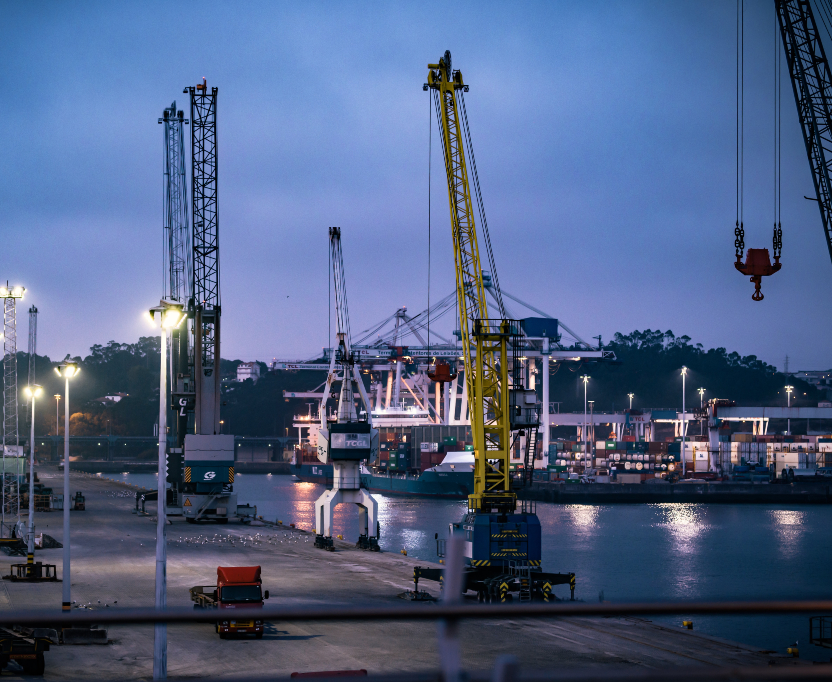Global connectivity

A well-connected city,
open to Europe and the world Porto has an open economy in a privileged location on Europe's West Atlantic coast, with access to high-quality transport and telecom infrastructure, ensuring great connectivity to international markets and global value chains.
open to Europe and the world Porto has an open economy in a privileged location on Europe's West Atlantic coast, with access to high-quality transport and telecom infrastructure, ensuring great connectivity to international markets and global value chains.
A bridge to global markets
Porto lies along the intersection of the world’s major international routes that join Western Europe, Africa, and the Americas. Its coastal location, and reliable infrastructure, combined with Portugal's unique ties to the rest of the world make it an ideal gateway to serve European and global markets.
Companies benefit from access to consumers and businesses in all 31 countries of the European Single Market. The European Union's (EU) growing number of trade agreements grant preferential access to another 70 international markets. In addition, Portugal has strong ties with emerging markets in Portuguese-speaking countries, such as Brazil and Angola, as well as with other large trade partners, like the United States, the United Kingdom, and China.
Porto lies along the intersection of the world’s major international routes that join Western Europe, Africa, and the Americas. Its coastal location, and reliable infrastructure, combined with Portugal's unique ties to the rest of the world make it an ideal gateway to serve European and global markets.
Companies benefit from access to consumers and businesses in all 31 countries of the European Single Market. The European Union's (EU) growing number of trade agreements grant preferential access to another 70 international markets. In addition, Portugal has strong ties with emerging markets in Portuguese-speaking countries, such as Brazil and Angola, as well as with other large trade partners, like the United States, the United Kingdom, and China.
200+ business service centres
in the Porto Metro Area
Source: InvestPorto (2024)
Same timezone as London and Dublin
1-3-hour difference from most EMEA markets


Porto's unique location facilitates business whether you go West or East. Portugal is the nearest European country to the United States and South America and the only country in continental Europe following Western European Time, the same time-zone as the U.K. and Ireland, which is just one hour behind Central European Time and a 2 to 3-hour time-zone difference from markets as far as Eastern Europe, the Middle East, Africa, and Brazil.
This adds to the city’s advantages as a prime choice for multinational companies nearshoring their operations. Dozens of multinationals chose Porto as a nearshore location for technology and business service centres throughout the last several years, with investments from companies such as BMW, Volkswagen, Continental, GKN Automotive, Natixis, BNP Paribas, Euronext, Kantar, Revolut, Five9, and Intellias.
This adds to the city’s advantages as a prime choice for multinational companies nearshoring their operations. Dozens of multinationals chose Porto as a nearshore location for technology and business service centres throughout the last several years, with investments from companies such as BMW, Volkswagen, Continental, GKN Automotive, Natixis, BNP Paribas, Euronext, Kantar, Revolut, Five9, and Intellias.

Transports and urban mobility
Porto ensures great accessibility to Europe and the rest of the world. Thanks to its compact urban structure, high population density, as well as the clustering of some of Portugal’s main export industries around the region, Porto benefits from close access to all modes of passenger and freight transport. The city's main transport hubs are located just 10 to 30 minutes from Porto’s historic centre and central business district.
Transport infrastructure
Porto ensures great accessibility to Europe and the rest of the world. Thanks to its compact urban structure, high population density, as well as the clustering of some of Portugal’s main export industries around the region, Porto benefits from close access to all modes of passenger and freight transport. The city's main transport hubs are located just 10 to 30 minutes from Porto’s historic centre and central business district.
Transport infrastructure
The Port of Leixões is the main harbor for Portuguese industrial exports. Connected to over 180 countries, it handles 17% of Portugal's seaborne trade and is the 3rd busiest port in the country in terms of ship traffic. It is considered one of the most efficient and competitive multipurpose ports on the Iberian Peninsula. Its facilities include two container terminals, which are undergoing expansion works to gradually increase capacity to 1.7 million TEUs per year by 2025, and a 60-hectare logistics platform that connects cargo flows to Portugal's extensive road and railway networks, as well as to Porto International Airport located just 2 km away. The harbor's Porto Cruise Terminal, which has garnered numerous international awards for its modern architecture and design, can accommodate large cruise ships, up to 300 metres long.

#3 busiest port
in Portugal by number of ships handled per year
Source: IMT (2024)
120+ destinations
with non-stop flights from Porto International Airport
Source: FlightConnections (2025)
Porto International Airport is the fastest-growing airport in Portugal and the country's second largest. It is increasing its capacity to handle up to 20 million passengers annually, and offers regular non-stop flights to 120 destinations in Europe, North America, Brazil, Africa, and the Middle East, including major international hubs such as London, Paris, Frankfurt, and New York. Flights to other major European cities generally take less than 3 hours.
According to INE, in the first half of 2024, the airport had a 5.8% increase in the number of passengers handled compared to 2023, making it one of the airports with the highest growth. It also received the title of Best Airport in Europe in the 10-25 million passenger category at the 2022 ACI Europe Best Airport Awards.
According to INE, in the first half of 2024, the airport had a 5.8% increase in the number of passengers handled compared to 2023, making it one of the airports with the highest growth. It also received the title of Best Airport in Europe in the 10-25 million passenger category at the 2022 ACI Europe Best Airport Awards.

The public transport system of Porto is reliable, eco-friendly and affordable, featuring an extended metro, train and bus network that covers the entire Metropolitan Area.
The Metro of Porto has six lines with a total of 82 stations, designed by local Pritzker Architecture Prize winner Souto Moura. The city is expanding the system with a €772 million project, co-funded by NextGenEU, which includes the construction of two new lines and 15 stations, increasing the total length of the metro network to 78 km and making it the largest in the country.
Porto's public transport system also includes the Campanhã Intermodal Terminal (TIC), Portugal's largest mobility hub, connecting Porto to more than 100 national and international destinations via metro, train, and bus. Since being established in 2022, around 20 million users and 400,000 buses have arrived or departed from the terminal, with a record of 10 million people in 2024. TIC has also played a key role in reaching carbon neutrality in the city by 2030, having allowed a reduction of 2,485 tons of CO2 since 2022.
The Metro of Porto has six lines with a total of 82 stations, designed by local Pritzker Architecture Prize winner Souto Moura. The city is expanding the system with a €772 million project, co-funded by NextGenEU, which includes the construction of two new lines and 15 stations, increasing the total length of the metro network to 78 km and making it the largest in the country.
Porto's public transport system also includes the Campanhã Intermodal Terminal (TIC), Portugal's largest mobility hub, connecting Porto to more than 100 national and international destinations via metro, train, and bus. Since being established in 2022, around 20 million users and 400,000 buses have arrived or departed from the terminal, with a record of 10 million people in 2024. TIC has also played a key role in reaching carbon neutrality in the city by 2030, having allowed a reduction of 2,485 tons of CO2 since 2022.
Digital connectivity
According to a recent report by the European Commission, Portugal has become a top performer in terms of fast broadband (NGA) coverage and fixed Very High-Capacity Network (VHCN) coverage. This achievement has been attributed to a combination of public and private investment, as well as increased competition among internet service providers in the country. The city of Porto, in particular, boasts citywide fiber-to-the-home coverage and a reliable 4G/5G mobile network, with median internet speeds that place it among the top 25 cities in Europe with the fastest internet, according to the Speedtest Global Index.
According to a recent report by the European Commission, Portugal has become a top performer in terms of fast broadband (NGA) coverage and fixed Very High-Capacity Network (VHCN) coverage. This achievement has been attributed to a combination of public and private investment, as well as increased competition among internet service providers in the country. The city of Porto, in particular, boasts citywide fiber-to-the-home coverage and a reliable 4G/5G mobile network, with median internet speeds that place it among the top 25 cities in Europe with the fastest internet, according to the Speedtest Global Index.
Most consistent
5G
speeds Source: MWC (2025)
speeds Source: MWC (2025)
205 Mbps
median download speed in Porto (fixed broadband)
Source: Speedtest (Mar/2025)
Porto was recently placed by MWC among the best cities in Europe for 5G networks, especially in regards to the consistency of its 5G speeds. The city led the international ranking with speeds exceeding 800 Mbps in the 10% of the fastest sessions. For the IT sector in particular, the quality and availability of 5G networks in the city offer enormous potential, facilitating advances in areas such as machine learning, data processing, and real-time analysis through faster data speeds and more reliable connections.

Another standout feature of the city's telecommunications infrastructure is its extensive public WiFi network, which is one of the largest in Europe. There are hundreds of free hotspots available throughout the city in parks, buses, and stations.
